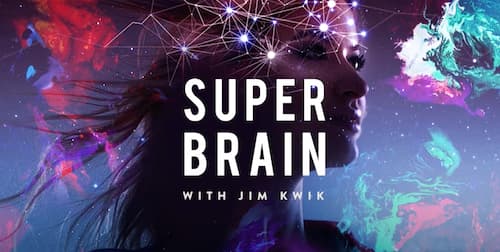What are the Upanishads? And how are they related to the Vedas?
Originating in ancient India, the Vedas are an ancient and comprehensive collection of teachings from the gurus of the Vedic period. The Vedas themselves predate Hinduism. They contain the mantras, chants, and lessons of the Vedic order.
And the Upanishads are an important part of that order. In fact, they contain some of the most influential philosophical teachings of the age. They discuss things such as meditation, philosophy, a higher state of being, and the nature of our maker.
But what’s fascinating about the Upanishads is that even though its teachings are now thousands of years old, they are just as relevant today as they were back then.
So we’re going to dive into the Upanishads to show you what they’re all about and what 5 key lessons we can learn from these ancient, mystical texts today:
Let’s begin!
What Are the Upanishads?
The Upanishads are a collection of writings composed in India between 800–500 BCE. They contain many of the most fundamental spiritual teachings of the age.
The precise Upanishads definition is difficult to pin down, partially thanks to its ancient origins.
In Sanskrit, Upanishad means: “sitting down near,” or “sitting close to.” The meaning alludes to the nature of the teachings.
Why? Because the lessons in the Upanishads were initially taught by spiritual sages and gurus. These gurus would sit to share their wisdom and insight with dedicated students.
What are the differences between Vedas and Upanishads?
The word Veda means “knowledge,” and Hindu people believe that the knowledge that can be found in Vedas is of divine origin. They comprise four holy Hindu texts written 2,500 years ago and contain mantras about various deities and melodies to be sung during religious rituals.
The Vedas are divided into 4 categories:
- Samhitas – mantras and benedictions
- Aranyakas – writings delineating the symbols and ceremonies concerning sacrifices
- Brahmanas – writings about the rituals and sacrifices
- Upanishads – discussions about spiritual knowledge and Hindu philosophy.
The Upanishads are a continuation of the Vedic philosophy. They elaborate on how the soul (Atman) can be united with the ultimate truth (Brahman) through contemplation and meditation.
Furthermore, the Upanishads explain the doctrine of Karma – the cumulative effects of a persons’ actions.
How many Upanishads are there and what are they?
So, we have learned that the Upanishads are a collection of writings about some of the fundamental spiritual teachings written between 800-500 BCE.
In total, there are 251 Upanishads, 108 of which are printed. There are 18 main writings that are considered to be authored by Krishna Dwaipayana Vysa – an incarnation of Lord Krishna and the father of all Vedic literature.

Who wrote the Upanishads?
There’s no single person responsible for the writing of the Upanishads. Since there are over 200 Upanishads, the task would have been next to impossible for just one person.
Instead, the Upanishads were compiled by a group of poets, scholars, and students over the course of many years. In fact, some of the noteworthy Upanishadic sages featured in the writings were Shwetaketu, Shandilya, Pippalada, and Sanat Kumara.
Tat Tvam Asi – (That thou art) Teaches us that God and ourselves are one and the same.
Ayam Atma Brahma – (This Self is Brahman) It refers to the consciousness within. Atman and Brahma are the same. Atman is consciousness that activates and moves your body and enables you to perceive and act.
Aham Brahma Asmi – (I am Brahman) As Brahma stands for reality, a supreme God, this teaching is about the declaration of one’s enlightenment. This means that the one that’s been enlightened declares his Self to be God.
These main teachings of the Upanishads aim to help us reach a higher state of being. How? By helping us liberate ourselves from bondage through losing our identities and becoming one with God.
Is the Bhagavad Gita part of the Upanishads?
No, the Bhagavad Gita is not a part of the Upanishads, but it is a part of the Mahabharata epic.
It represents the narrative of a conversation between Prince Arjuna and his guide and charioteer Krishna.

5 Essential Upanishad Philosophies We Can Learn From Today
The Upanishads belong to the Vedas and are one of the most popular and beloved of the Vedic order.
Why? Because the Upanishads urged those seeking Enlightenment to turn away from ritual sacrifice and asked individuals to instead look inward.
The lessons in the Upanishads are timeless. They’re just as powerful and applicable today as they were thousands of years ago.
Here are five core Upanishad philosophies we can learn a lot from today.
1. Samsara, reincarnation
The concept of samsara is prevalent in the Upanishads. Samsara, Sanskrit for, “wandering,” is the cycle of being.
It represents reincarnation, the concept adopted by several Eastern religions of being reborn after you die according to the karmic cycle.
Regardless of your personal beliefs, there’s something important to be taken from the samsara. Samsara tells us that all of life is in flux. The great wheel of life continues to turn, and nothing is ever stagnant:
This vast universe is a wheel, the wheel of Brahman. Upon it are all creatures that are subject to birth, death, and rebirth. Round and round it turns and never stops.
—Svetasvatara Upanishad 1.6-8
Samsara suggests that energy cannot be destroyed or diminished. It is simply transmuted. And it really is quite a poetic perspective on the cycle of death and birth.
2. Karma, action
Now, here’s a word you might be more familiar with. Karma, literally translated, means, “action, work, or deed.” But it also refers to the spiritual doctrine of cause and effect.
The karmic cycle suggests that what you do today will influence your life tomorrow. And circling back to the concept of samsara, what you do today will also influence your next life.
The karmic principle urges you to reflect on what you do before you do it. Because each action matters, and what you do affects your life and the lives of those around you.
3. Dharma, universal law
In the Upanishads, the concept of dharma represents order, truth, and ultimate universal law.
Dharma is a concept present in many spiritual beliefs, including Buddhism, Jainism, and Hinduism. But for the Vedic order, dharma was a little bit different.
Dharma in the Upanishads represents a whole and complete truth that can’t be refuted. It is the social obligation we have toward one another, the invisible law that governs our actions.
Dharma encourages us to fulfill our role in society to the very utmost of our abilities, carrying ourselves with respect, empathy, and courage.

4. Moksha, liberation
In Sanskrit, Moksha means “liberation, enlightenment, release.” And it is a powerful concept from the Upanishads.
Moksha is nirvana, the ultimate end of suffering. It represents the surpassing of all worldly pain, desire, and longing for true and ultimate peace. It is the final escape from the cycle of death and rebirth.
For us today, moksha represents a state within the self. We are capable of making a hell or a heaven out of our time on this earth, and moksha is attainable if we learn to let go of our attachments.
5. Atman, soul
Atman is the true self beyond the identity of the ego. It’s who we are at our innermost core. It’s the life beneath the exterior facade; beneath the clothes, the family, the friends, the job, the hobbies, the memories, and the experiences.
Beneath all we’ve come to identify with, atman represents something timeless and untouchable:
The eye cannot see it; the mind cannot grasp it. The deathless Self has neither caste nor race, neither eyes nor ears nor hands nor feet. Sages say this Self is infinite in the great and in the small, everlasting and changeless, the source of life.
— Mundaka Upanishad 1.1.6
It’s something we must strive to connect with and listen to. Because it’s something intangible but very real.
So, what’s one of the best ways to connect with this true self that lies within? Mindfulness meditation.
Try some mindfulness meditation for yourself to access the self beyond the ego. You may be surprised by what you find.










